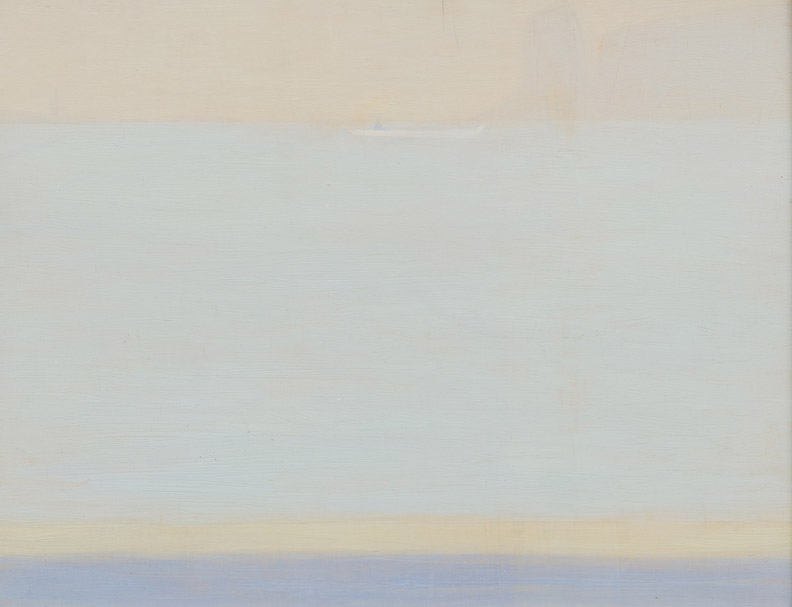'Antonio Calderara: From Lake Orta' review - Studio International
29 July 2022
Lisson Gallery’s exhibition of the works of the Italian postwar painter Antonio Calderara (1903-78) seeks to chart the artist’s drawn-out, and not always consistent, progression from figuration to abstraction, by spotlighting examples of the figurative precursors to the pared-down geometric compositions for which Calderara is better known. In 1934, with his wife, Carmela, and baby daughter, Gabriella, Calderara moved from Milan to the shores of Lake Orta in the Piedmont region of northern Italy, soon settling in the village of Vacciago. As such, his artistic development is framed by his home life – marked by the tragedy of his daughter’s death at the age of 11, in 1944 – and fondness for the Piedmontese landscape, both of which constitute his main subjects. More than a formalist trajectory, the exhibition is interesting for the clues it contains to the intimacy and vulnerability strongly felt even in Calderara’s purest abstractions. If Calderara’s figurative base eventually dissolved, this did not diminish any of his work’s emotional attachment to it.
One is first struck by the tiny scale of each work (apart from the framed sequence of watercolours, not one of them exceeds 30cm in breadth). One the one hand, the scale contrasts with the sense of limitlessness pervading his later landscapes and abstractions, and yet such limitlessness is evoked by a diminishment to nothingness – increasing minimalism, the dissolution of form into colour and “light” – in tune with the works’ material insubstantiality. This metaphysical paradox (a general facet of minimalism that is especially pronounced here) governs the way many of the works disappear into formlessness while also taking form. A boat on the horizon in Senza Titolo (1958) keeps the image on the side of figuration, but what if it sailed beyond the threshold?
Read the full piece via Studio International.
'Antonio Calderara: From Lake Orta' continues until 20 August.
